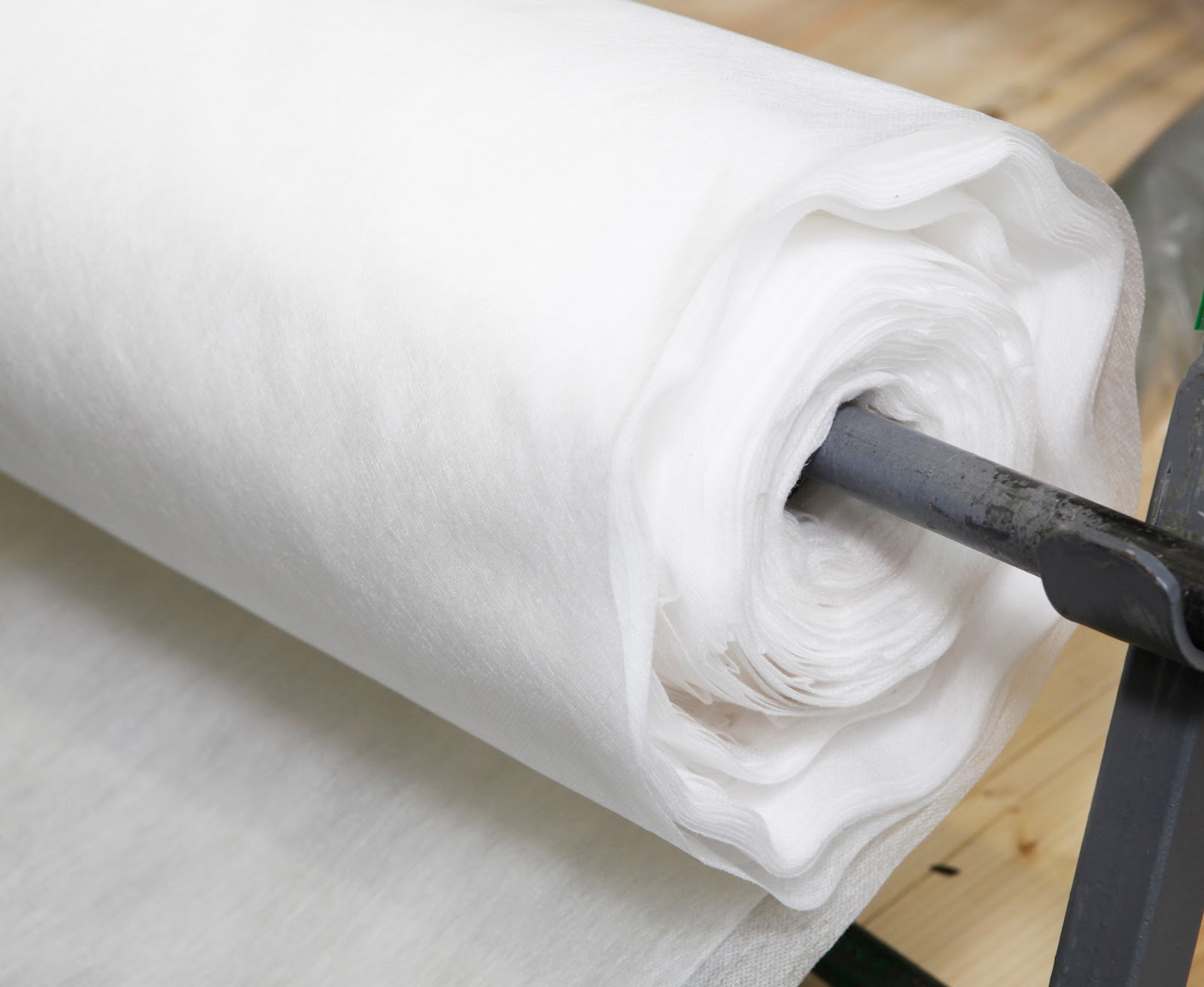
Types of Non-Woven Fabrics
In the textile industry, a fabric that is made without using traditional methods of weaving or knitting fibres is considered a non-woven fabric. Non-woven fabrics are used in the creation of a variety of household and medical goods, in the agricultural industry and in land application uses, just to name a few. Non-woven fabrics are popular, not only because they can be made quickly, but also because they are very cost-effective to make. These fabrics can also be reused and recycled, which adds to their appeal.
To create non-woven fabrics, long and short fibres are bonded through either mechanical, chemical heat or solvent processes. One example of a non-woven material that you will no doubt be familiar with is felt, however there are many more available on the market, and I will share the attributes of different non-woven fabrics to help you make the choose the best for your needs.

Spunlace Non-wovens
Spunlace non-wovens are used in common objects such as wet wipes, facial mask fabrics, and medical non-woven fabrics, just to name a few. To make a spunlace non-woven, high-pressure water jets are applied to one or more layers of fiber web, and the water pushes the fibers into a lace-like pattern. This non-woven composition is strong due to the irregularity of the fibre interlay. It is valued for its high absorbency rate, which makes it perfect to clean up spills or to apply cosmetic serums via facial masks.
Spunbond Non-wovens
To form a spunbond non-woven, polymer is stretched into a continuous filament, which is then laid into a web-like pattern along a conveyor belt. With the addition of either chemical, thermal or mechanical bonding processes, the fibres then form a strong and durable fabric, often used for things like carpet backing or filters.
Meltblown Non-woven
Similar to a spunbond non-woven, a meltblown non-woven also uses polymer, however the polymer is fed through a linear die to form long, thin fibres. These fibres are cooled via hot air blasts, which are then forced onto a collector screen to form a fabric that creates a fine filter and is self-bonded. Often meltblown non-wovens are added to spunbond non-wovens to create SM or SMS webs. Meltblown non-woven fabrics are used extensively in medical mask production, diaper and feminine hygiene products.

As you can see, the different processes to create non-woven fabrics results in differing fabrics that all have specialized uses. It is important to understand how these non-woven fabrics are made, as the fabrication process and materials used will no doubt impact your decision as to which non-woven fabric type to choose. It is certain that whichever non-woven fabric you use, your choice will be durable and cost-effective!
Source: wikipedia.org, wikipedia.org, chuzhouexports.com
Stafford Textiles Limited has over 60 years of experience in developing, sourcing and supplying a wide variety of INDUSTRIAL and TECHNICAL TEXTILES for a variety of applications. We excel in developing and bringing new fabrics to market and in helping our customers to find appropriate solutions to their fabric challenges. Learn more about our company and our extensive line of products at staftex.com.



